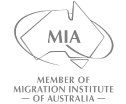For skilled professionals establishing new lives in Australia through skilled migration programs, reuniting with parents becomes a significant consideration. The Australian immigration system offers two primary pathways for parent migration: Contributory Parent Visas and Non-Contributory Parent Visas, each with distinct financial implications, processing timelines, and eligibility requirements. Understanding these options is crucial for making informed decisions aligned with your family’s circumstances.
Comparative Analysis: Contributory vs. Non-Contributory Parent Visas
| Feature | Contributory Parent Visas | Non-Contributory Parent Visas |
|---|---|---|
| Processing Time | 3–5 years[1][4] | Up to 29 years[1][3] |
| Visa Cost | High ($50,000+ AUD)[1][5] | Lower application charges[2][5] |
| Assurance of Support | Required ($10,000 bond main applicant)[5] | Not required[2] |
| Visa Subclasses | Subclass 143 (offshore), 864 (onshore aged)[1] | Subclass 103 (offshore), 804 (onshore aged)[1][3] |
| Pathway to PR | Faster route to permanent residency[4] | Slower route due to queue system[3] |
Financial Commitment Breakdown
The Contributory Parent Visa involves substantially higher costs, including:
- (AoS) bond: $10,000 for the primary applicant, refundable after 10 years[5]
- Second Installment: Additional ~$43,600 AUD per applicant[5]
In contrast, the Non-Contributory pathway has lower upfront fees but longer processing times, making it suitable for families prioritizing cost over urgency[2][3].
Eligibility Requirements
Both visa types share common criteria:
- Balance of Family Test: At least half of the applicant’s children must be Australian citizens/permanent residents or eligible NZ citizens[1][2][3].
- .
- Health/Character: All applicants must meet health and character requirements[2][3].
Differences in eligibility:
- Contributory visas have no age requirement for Subclass 143, while Subclass 864 requires applicants to meet the Australian Age Pension threshold (currently 67 years)[1][3].
- Non-Contributory Aged Parent visas (Subclass 804) mandate meeting the Age Pension eligibility[3].
Strategic Considerations for Migrant Families
When to Choose Contributory Visas
- Urgent reunification: Ideal for ageing parents needing quicker relocation due to health or dependency factors[4].
- Financial capacity: Suitable if sponsors can afford the significant costs, offset by faster permanent residency benefits like Medicare access and unrestricted work rights[2][5].
When Non-Contributory Visas Are Viable
- Long-term planning: Families comfortable with multi-decade waits[1].
- Budget constraints: Those unable to cover contributory fees but willing to accept prolonged separation[2][5].
Additional Options
- Temporary Parent Visa (Subclass 870): Allows parents to stay 3–5 years per visa (max 10 years) without meeting the Balance of Family Test[1].
- Provisional Visas (Subclass 173/884): Temporary pathways enabling staged payments before transitioning to permanent contributory visas[1].
Conclusion
For skilled migrants, choosing between contributory and non-contributory parent visas hinges on financial capacity and reunification urgency. The contributory pathway offers accelerated permanent residency at a steep premium, while non-contributory visas provide affordability with extended processing times. Assess your parents’ age, health, and your financial readiness to determine the optimal route for your family’s reunion in Australia.
Relevant visa details and financial figures sourced from Australian government–affiliated immigration resources[1][3][5]. Always consult registered migration agents for personalized applications.










